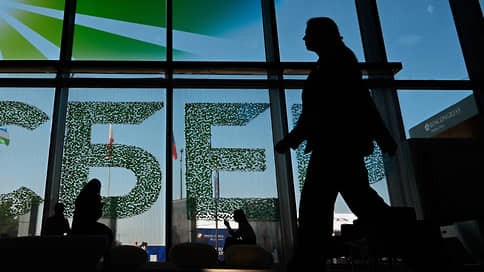Sberbank began offering companies deposits in rupees
[ad_1]

The rupee, which is poorly represented on the Russian financial market, is becoming in demand against the backdrop of increasing trade turnover with India. Thus, Sberbank (MOEX: SBER) began opening deposits in Indian currency for large clients, including “for further business financing” in rupees. However, experts point out that exporters, if possible, try to avoid making payments in Indian currency, preferring dollars or yuan.
On Tuesday, April 16, Sberbank announced the start of opening deposits for legal entities in Indian rupees (INR). “This will allow the bank to generate the necessary liquidity for further financing of business in rupees at attractive rates,” explained the credit institution. The bank believes that demand will come from companies “that are already conducting foreign trade with India, as well as clients seeking to hedge their currency risks with additional profitability by placing available funds in a currency that is maximally correlated with the dollar.” The minimum deposit amount is 1 million INR (1.1 million rubles). At the same time, the maximum rate of 5.11% per annum can be obtained when placing an amount equivalent to $60 million or more (from 5 billion INR or 5.6 billion rubles).
According to the Central Bank website, Sberbank has one branch in India, opened in 2010. In October 2022, the bank announced the opening of a rupee correspondent account at this branch. In addition, the bank has the status of a portfolio investor in India (see Kommersant on January 9), it provides access to operations on the securities market.
The few banks that currently offer rupee accounts and settlements in the currency chose not to comment on the matter. One of the banks that operates in the foreign trade segment clarified that they do not plan to launch deposits in this currency, since even regular accounts in rupees are not particularly popular among clients. Kommersant’s interlocutor at another bank believes that it is advisable to launch such an instrument only if the scale of the business is available to credit institutions of the Sberbank level.
According to the deputy chairman of the board of Sberbank, Anatoly Popov, the Indian rupee is in demand among the bank’s corporate clients. In addition, various forwards are available at the bank to manage foreign exchange risks in the rupee-ruble pair, the bank said. Moreover, speaking at the National Oil and Gas Forum, the director of the development center of the Indian branch of Sberbank, Alexey Dolgushin, said that there are no problems in settlements with the rupee, TASS reported. According to the top manager, all payments are processed within one day.
For a bank, such an instrument is one of the tools for attracting long-term liquidity from other (friendly) countries, notes Olga Blednova, head of the practice for providing consulting services to financial sector companies at Kept. “Here it turns out that the bank sells “certificates” to Indians and issues loans to enterprises with their money,” says the expert.
Chief economist of PF Capital Evgeny Nadorshin believes that Sberbank can operate the rupee through its correspondent account in a branch in India. “Through it, apparently, the bank has the opportunity to operate with rupees in such a way as to provide hard currency as needed,” he believes. At the same time, the expert admits, for a number of companies, opening an account in an Indian branch may not be so convenient, including due to currency legislation.
The Indian currency remains of limited convertibility. At the same time, Kommersant’s source in the oil market admits that when oil is exported to India, payment is made in rupees, but subsequently Indian banks transfer them to dirhams or yuan for withdrawal outside the country. According to another Kommersant source in the oil market, Russian exporters, whenever possible, avoid payments in rupees, preferentially receiving payments in American or Chinese currency. The head of the Central Bank, Elvira Nabiullina, also assessed the volume of stuck rupees as “insignificant” in the fall of 2023.
At the same time, according to Daria Nosova, head of fintech practice at O2 Consulting, “alternative currencies of friendly countries need to offer not only operational capabilities (such as transfers for settlement purposes), but also products that ensure their preservation.” As Ivan Tikhonenok, head of the banking group at Amond & Smith Ltd, points out, placing a deposit in rupees allows you to insure inflation risk in the Russian Federation.
[ad_2]
Source link





